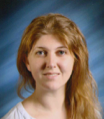By
Shelby Strong, posted July 4, 2016 –
Walk down the halls of most
schools, and you’ll no doubt hear students talking. In English language arts,
or ELA, classrooms, students may be heard discussing an author’s intent or
characterization. In social studies classrooms, there may be debate on events
that lead to war or the resulting fallout. During science class, students
collaborate in labs and compare their results. Knowledge is acquired through
active participation in classroom discussions. Across the hall in the math
classroom, an entirely different scene may be playing out. Students recite
answers and procedures. They are still talking, but very little discussion is
taking place. At first glance, this seems like a trivial distinction.
There has been a lot of talk
about re-imagining the modern mathematics classroom. Many blog posts and think
pieces have been dedicated to answering the question familiar to all math
teachers: “When am I going to use this?” Unlike ELA and other classes, the new
focus of math education too often appears to be emphasizing real-world
application above all else. This is important, but it also feels hollow, as
though the sole measure of mathematics is its practical usefulness. There is a
lot to be said for the beauty of pure mathematics. Logical reasoning, trial and
error, cause and effect, viable proofs—these are all real-world skills, even if
the content used to teach these skills is not considered necessary.
There was public outcry when
interpretations of the Common Core State Standards for English Language Arts
& Literacy appeared to favor technical nonfiction over literature, and
with good reason. Although students will not necessarily use their knowledge of
Shakespeare when they enter the workforce, there is no question that it has a
place in our schools. The study of literature contributes to learning
compassion, empathy, and critical thinking. Students benefit from classroom
discussions that compare different interpretations of the same text and that challenge
their preconceived notions. At the same time, we know that it is not enough to
simply read literature. The benefits of studying literature lie in the search
for historical context, discussion of underlying themes, and critical analysis
of the text. Much in the same way, mathematics cannot be boiled down to
procedures and step-by-step directions or comparing unit prices at competing
supermarkets. Discussions in the math classroom allow students to formulate
logical arguments and strengthen their reasoning skills. Both subjects are
enhanced by robust discussion among learners, where ideas are spoken aloud and
challenged.
If you need further
convincing that discussion is a necessary component of a well-rounded math
classroom, look no further than the Common Core’s Standards for Mathematical
Practice. These standards, written to apply across the entire K–12 math
curriculum, highlight important and necessary characteristics of a proficient
mathematician. Several standards address the need for communication, but none
so clearly as Standard
for Mathematical Practice 3: Construct viable arguments and critique the
reasoning of others. This cannot be done without giving students the
opportunity to have conversations about what they are learning and giving
students space to be imperfect. The importance of communication among learners
is also heavily emphasized in the NCTM publication, Principles and Standards for School Mathematics:
Communication
. . . is a way of sharing ideas and clarifying understanding. Through
communication, ideas become objects of reflection, refinement, discussion, and
amendment. . . . When students are challenged to think and reason about
mathematics and to communicate the results of their thinking to others orally
or in writing, they learn to be clear and convincing. Listening to others’ explanations
gives students opportunities to develop their own understandings. Conversations
in which mathematical ideas are explored from multiple perspectives help the
participants sharpen their thinking and make connections. [emphasis added]
(NCTM 2000, p. 60)
In part 2 of this series, I’ll
discuss what robust mathematical discussions sound like and how to encourage
and enhance student participation.

Shelby Strong is
a middle level math educator in Jefferson Parish, Louisiana. She is passionate
about mathematics, and currently serves as a Louisiana Teacher Leader. She is
an active member of Twitter Professional Learning Communities and has presented
on improving mathematical instruction at the district and state level.